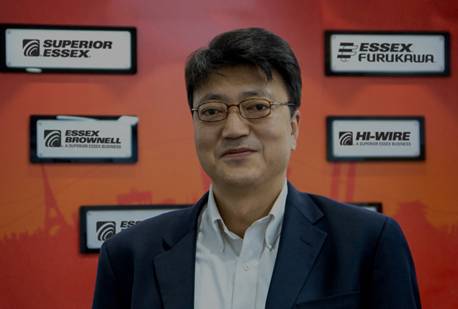
Hoganas, a producer of iron and metal powders including soft magnetic alloys, reports that its innovative sustainability efforts are achieving 83% use of side stream materials at its facilities worldwide, also that it is adding new production capacity to its North American plant in Johnstown, PA.
The expansion in Pennsylvania includes construction of a new 24,000 square foot building, the purchase of new machinery and addition of about 25 new jobs. The purpose is to expand its production capabilities for additive manufacturing and other technologies, according to Dean Howard, president Americas Continent for the company.
With 18 production sites in 11 countries and a total production capacity of 500,000 tons of metal powder, Hoganas creates sizeable quantities of byproducts or side streams. Its sustainability programs work to ensure that as much of this material as possible is used as new raw material in its own production processes or by other industries. No less than 83 per cent of Hoganas side streams were used in 2018, amounting to 155,400 tons.
The company’s production of magnetic materials account for a significant portion of its overall tonnage of materials handled, according to its annual sustainability report. In 2018, Hoganas handled 248,470 tons of ferrous and ferro alloy raw materials out of 719,460 total tonnage in raw materials.
A large proportion of their side streams is returned to Hoganas’ own production processes while some is used as raw material for other manufacturing companies, for example, for asphalt, insulation or as load-bearing layers in groundworks, according to Bjorn Haase, who is responsible for the company’s side stream program, pictured above.
“Our side streams can replace materials that are otherwise blasted out of rock for use in roadbuilding, for example,” said Haase. “We are part of the circular economy in that we provide industries with raw materials from our side streams and largely use scrap as a raw material in our own production processes. The more side streams we can use in society, the less virgin material is needed.”
Finding potential applications for Höganäs side streams has not always been quite that simple, says Haase, recognized as a pioneer in the field. Haase and his insistent efforts and cooperation with other companies are one of the main reasons why the Hoganas program is so successful, says the company.
“We are successful in pursuing technical development and projects that the entire steel industry can benefit from thanks to cooperation with companies in the steel industry and other industries,” he notes. “We also link together industries that do not normally come in contact with one another. Slag asphalt for the asphalt industry and water treatment with slag for the water treatment industry are just a couple of examples of successful projects of this kind.”
Assessing which side stream materials are suitable for which customers is a considerable challenge and requires extensive analysis. “We have a number of products from our side streams, but we have to come up with new options the whole time. This is why we carry out extensive sampling procedures in order to analyze and control the qualities of our material and work out the industries for which the material might be useful. We have to be innovative and constantly think along new lines,” says Haase.
“It was really difficult to gain support for the use of side streams ten years ago, but nowadays circular economy and industrial symbiosis are a frequent topic of conversation. There is now a great deal of interest among both customers and authorities, and more and more people are realizing that we have to look after the Earth’s resources.”
For more info, see www.hoganas.com.



